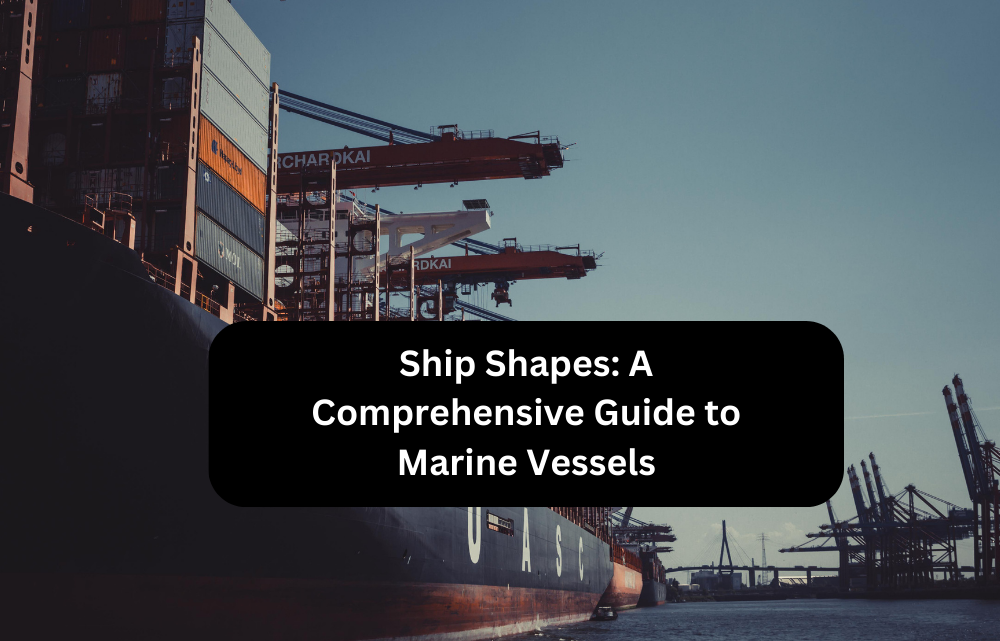Ship Shapes: A Comprehensive Guide to Marine Vessels
February 27, 2024Marine vessels, in all their diversity, are the lifeblood of maritime exploration, trade, and transportation. From majestic cruise liners to sturdy cargo ships and sleek submarines, each vessel is meticulously designed to fulfill specific purposes on the vast expanse of the world’s oceans.
In this comprehensive guide, we will embark on a journey through the varied shapes, sizes, and functions of marine vessels, exploring the fascinating world of shipbuilding and maritime engineering.
The Evolution of Ship Design
Shipbuilding has a rich history dating back thousands of years, evolving from primitive rafts to sophisticated modern vessels. Early civilizations crafted rudimentary boats using wood, reeds, and animal skins, gradually advancing to more complex designs like the Phoenician galleys and Viking longships.
The age of exploration spurred innovation, leading to the development of larger, ocean-going vessels such as the caravel and carrack. With the industrial revolution came the era of steam-powered ships, revolutionizing maritime transportation and paving the way for the modern vessels we see today.
Types of Marine Vessels
Cargo Ships
Cargo ships are the workhorses of global trade, transporting goods and commodities across vast distances. They come in various sizes, from small container ships to massive bulk carriers capable of carrying millions of tons of cargo. Container ships, in particular, revolutionized the shipping industry with their standardized containers, streamlining the loading and unloading process.
Passenger Vessels
Passenger vessels cater to the travel and leisure needs of millions of people worldwide. This category includes cruise ships, ferries, and ocean liners, offering luxurious accommodations, entertainment facilities, and recreational activities for passengers. Cruise ships, in particular, have become floating cities, boasting amenities ranging from theaters and restaurants to swimming pools and shopping malls.
Naval Vessels
Naval vessels are deployed by military forces for defense, patrol, and combat missions. They encompass a wide range of ships, including aircraft carriers, destroyers, frigates, submarines, and patrol boats. Each type of naval vessel serves a specific role, from projecting power and conducting maritime security operations to conducting stealthy underwater surveillance.
Specialized Vessels
Specialized vessels are designed for specific tasks or industries, such as fishing, research, offshore oil and gas exploration, and salvage operations. Trawlers, research vessels, drillships, and salvage tugs are examples of specialized vessels tailored to meet the unique demands of their respective industries.
Anatomy of a Ship
Understanding the anatomy of a ship is essential for appreciating its design, functionality, and operational capabilities. Key components of a ship include the hull, which provides buoyancy and structural support, the propulsion system, which drives the vessel forward, and the superstructure, which houses crew accommodations, navigation equipment, and cargo holds. Other essential features include the bridge, engine room, navigation lights, and safety equipment like lifeboats and life rafts.
Read: Prominent Frameworks For Robust eCommerce Development
Emerging Trends in Ship Design
In recent years, technological advancements and evolving industry trends have influenced ship design and construction. Environmental concerns have led to the development of eco-friendly vessels powered by alternative fuels like liquefied natural gas (LNG) and hydrogen fuel cells.
Automation and digitalization have transformed ship operations, enhancing efficiency, safety, and crew welfare. Additionally, there is a growing focus on designing ships with improved fuel efficiency, reduced emissions, and enhanced sustainability to meet stringent regulatory requirements and address climate change concerns.
Conclusion
Marine vessels stand as the pinnacle of centuries of innovation, engineering prowess, and maritime knowledge. From the humble origins of ancient sailboats to the state-of-the-art supertankers and nuclear-powered submarines of today, ships have left an indelible mark on human history, serving as conduits for global commerce and connections between distant shores.
As we persist in pushing the frontiers of technological advancement and environmental stewardship, the trajectory of ship design holds the promise of ongoing excitement and transformation. Whether traversing the vast expanses of the open seas or delving into uncharted territories, the realm of marine vessels never fails to evoke wonder and captivation, underscoring the limitless potential that lies ahead in our maritime odyssey.
Moreover, with the integration of cutting-edge technologies like 5-axis machining, the precision and efficiency of ship construction are poised to reach unprecedented heights, further enhancing the capabilities and performance of future vessels.



